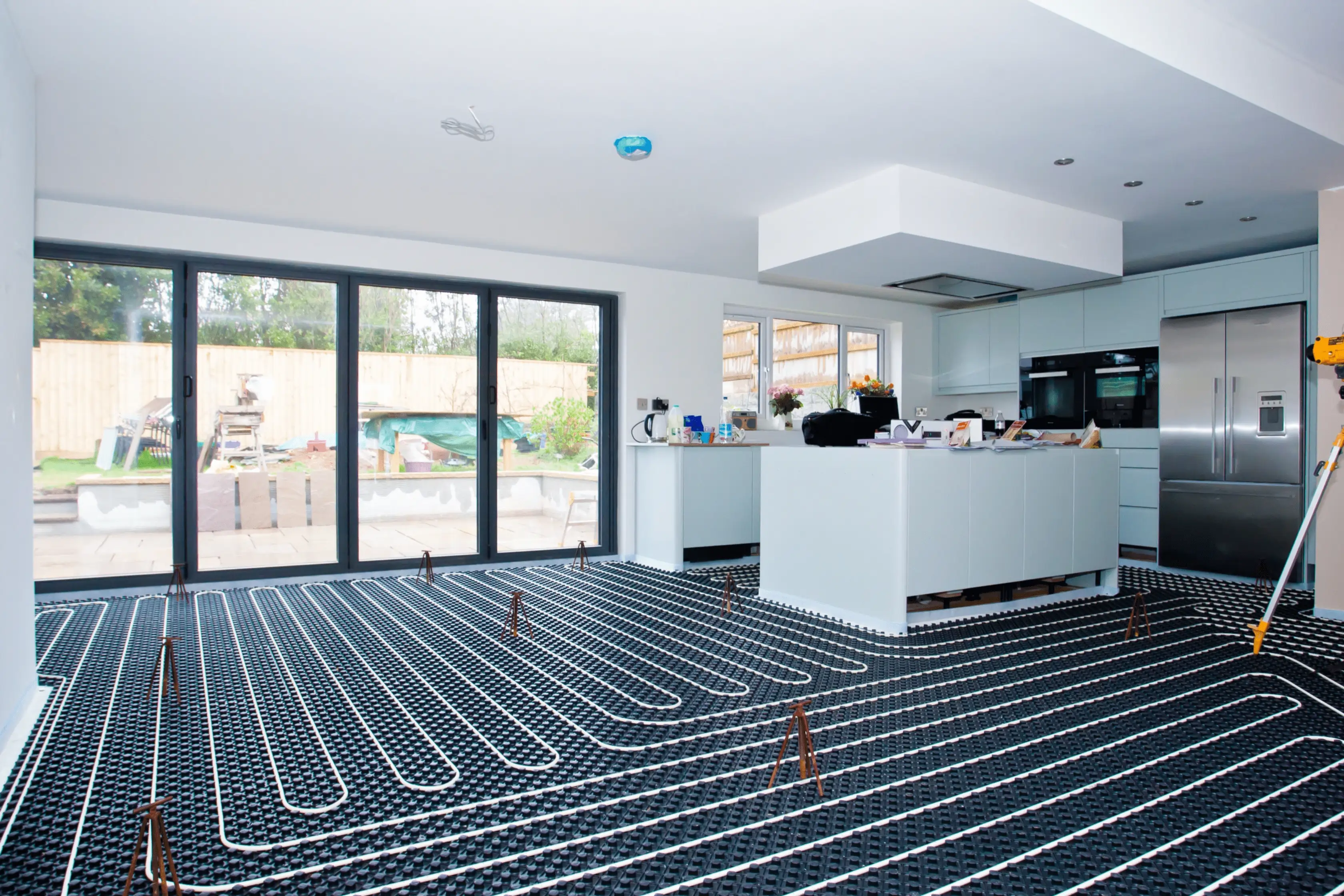More and more homeowners are jumping on the underfloor heating bandwagon for a modern heating setup. But there are an array of options to choose from and how much does underfloor heating cost?
This Bathroom Takeaway buying guide is here to provide insights into the functionality of underfloor heating and its benefits in maintaining warmth during colder periods. So let’s get into it!
What Underfloor Heating Options Are Out There?
So what is underfloor heating and what can you choose from? Well to keep it simple you have wet underfloor heating and electric underfloor heating styles.
So let’s look at what each one is and the pro’s and con’s of having underfloor heating
Wet Underfloor Heating
A wet underfloor heating system uses pipes that are filled with warm water. Usually, these systems are powered by a boiler, but more people are starting to choose heat pumps as a popular alternative.
The pipes tend to be set into a layer of floor screed.
If you're starting from the ground up or thinking about a full-house heating setup, this is the top choice for underfloor heating.
Electric Underfloor Heating
Electric underfloor heating operates by placing a super-slim heating wire beneath your flooring.
It uses regular electricity to produce warmth, which then radiates up through the floorboards, heating both the floor and the room above to the temperature you set on the thermostat.
Pro’s
- Compatible with many types of flooring finishes.
- More energy efficient overtime.
- Saves space by removing radiators.
- Reduces cold areas of a room.
- Improves air quality
Con’s
- It’s more expensive to have it it installed
- Installing it can be longer due to several factors including levelling
- The floor if needs be and the screed drying out.

How Do You Install Underfloor Heating?
When you install underfloor heating, you’re basically laying down a system of pipes or wires under the floor. This way, the entire floor acts like a big radiator, warming up the whole area.
The usual method for installing underfloor heating involves placing pipes on top of insulation and beneath a screed.
The pipes are arranged in rows, coiling them as needed, and spaced out evenly to guarantee consistent heat distribution throughout the floor. They’re secured in place with pipe staples.
Next, they pour a self-leveling screed over the pipes, which hides them away. After pouring, they treat the screed with a chemical spray to help it set, then tamp it down and let it dry.
It's wise to give your screed around four weeks to dry completely before you start putting down flooring, but make sure to get advice from your supplier about the specific mix you have if you are doing it yourself, otherwise we would always recommend a professional doing it.
How Much Does It Cost For Underfloor Heating?
Whether your intention is to install a heating system for an entire home or to warm a specific room in the house the cost can vary.
So if you're a homeowner, you might be looking at a cost of around £3,000 to £13,000 for getting underfloor heating set up in a typical-sized home, including both materials and installation.
If you are concerned about costs, electric underfloor heating is probably easier on the wallet when buying and installing, but wet underfloor heating usually saves you more in running costs. Below is a quick table breakdown on the property type and the average cost per m of installation.
| Underfloor Heating System and Property Type | Average Installation Cost Per M² |
|---|---|
| Electric In Renovation | £60 - £85 |
| Electric In New Build | £50 - £75 |
| Wet In New Build | £85 - £100 |
| Wet In Renovation | £95 - £110 |

















